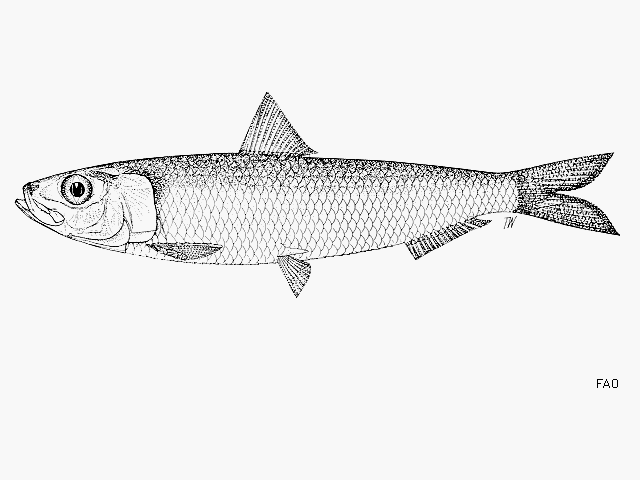| Dorosomatidae (Gizzard shads and sardinellas) |
| 13 cm SL (male/unsexed) |
|
pelagic-neritic; marine; depth range 1 - 60 m |
| Western Indian Ocean: Somalia (Ref. 30573), Kenya, and Tanzania. |
|
Dorsal spines (total): 0-0; Dorsal soft rays (total): 13-21; Anal spines: 0-0; Anal soft rays: 12-23. Distinguished from all other clupeids along the East African coast by its pelvic fin ray count of i 8. Very closely resembles S. longiceps, but its head shorter and lower gill rakers fewer. A faint golden spot behind gill opening, followed by a faint golden mid-lateral line; a distinct black spot at hind border of gill cover (absence of silver pigment). |
| Forms schools in coastal waters. Feeds presumably mainly on phytoplankton like S. longiceps and its breeding biology is perhaps similar to that species too. Apparently not abundant, occurring mostly during the northeast monsoon period (November-January). |
|
Least Concern (LC); Date assessed: 02 March 2017 Ref. (130435)
|
| harmless |
|
Source and more info: www.fishbase.org. For personal, classroom, and other internal use only. Not for publication.

